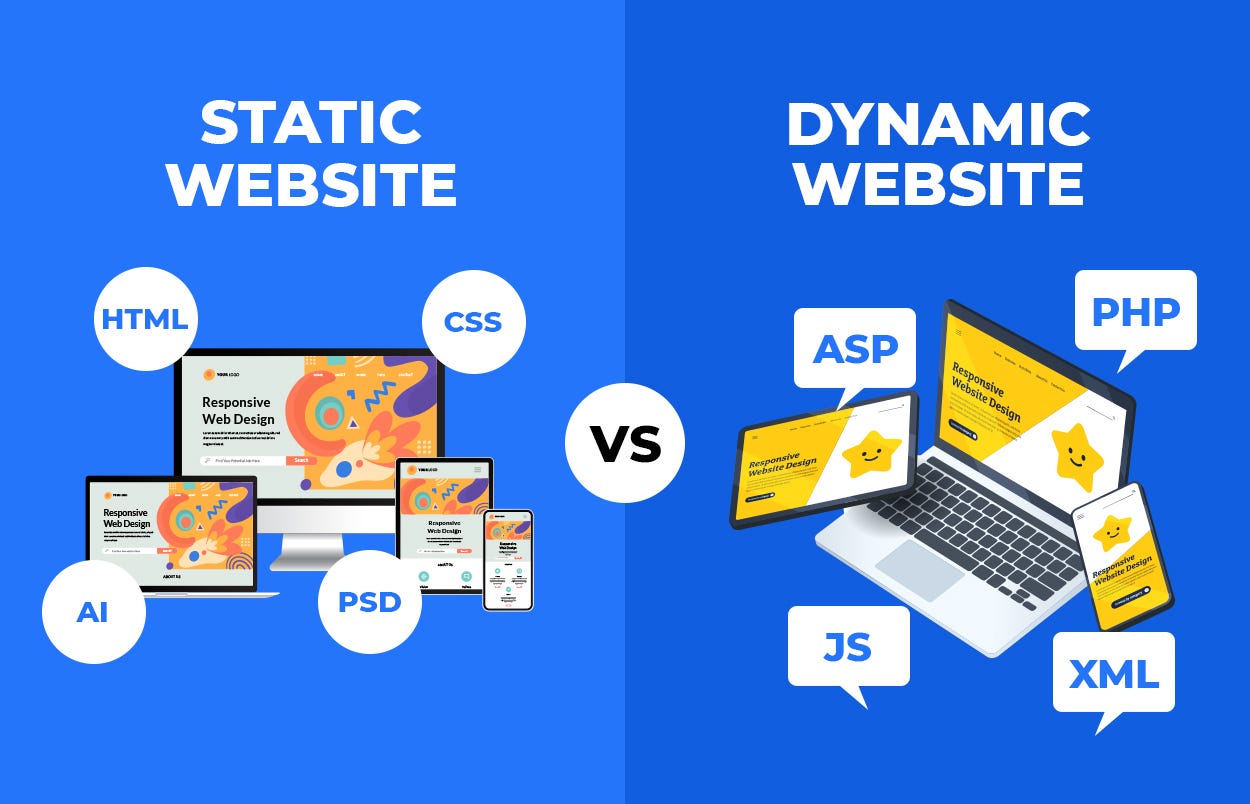Static vs Dynamic Websites: Which One Is Right for You?
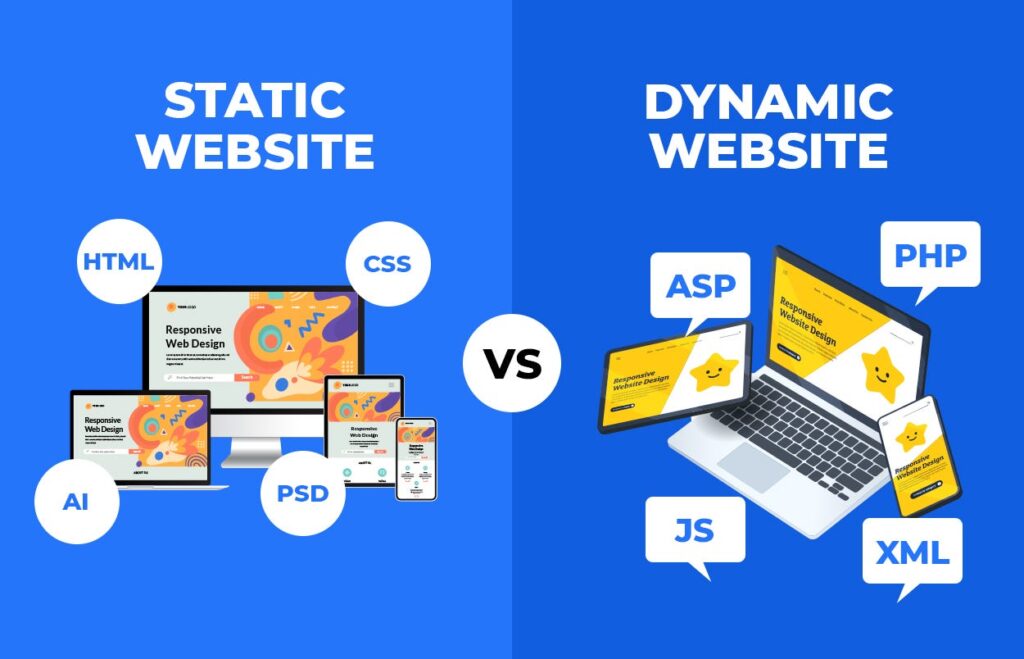
In today’s digital era, every business, professional, or brand needs a website. But one of the most common questions asked by business owners and startups is:
“Should I go for a static website or a dynamic website?”
The answer depends on various factors like the purpose of your site, your budget, scalability needs, and how often you plan to update your content. In this blog, we’ll dive deep into the differences between static and dynamic websites, explore their pros and cons, and help you make an informed decision that suits your business goals.
What Is a Static Website?
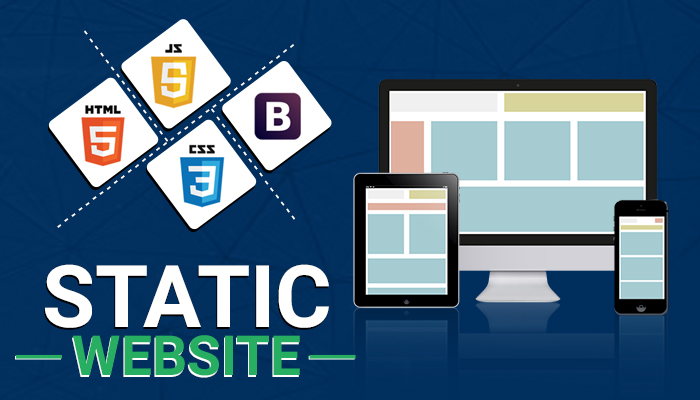
A static website consists of fixed web pages that are coded in HTML and CSS. Each page on a static website exists as a separate file and doesn’t change unless manually edited by a developer.
These websites display the same content to every visitor and are best suited for small websites with limited pages.
Technologies Used in Static Websites:
HTML
CSS
JavaScript (for interactivity)
Bootstrap or Tailwind (optional frameworks)
Advantages of Static Websites
Faster Loading Speed
Static websites load quickly because there’s no backend server processing.Cost-Effective
It’s cheaper to design and host a static website.Simple and Secure
With no database or server-side scripting, there are fewer vulnerabilities.Ideal for Small Projects
Best for portfolios, brochures, landing pages, or informational websites.Low Maintenance
Once published, a static website doesn’t need regular backend updates.
Limitations of Static Websites
Difficult to Update: Requires coding knowledge or developer support.
Not Scalable: Adding new content means creating new HTML files manually.
No User Interaction: Static sites can’t offer login features, forms, or personalized content.
What Is a Dynamic Website?
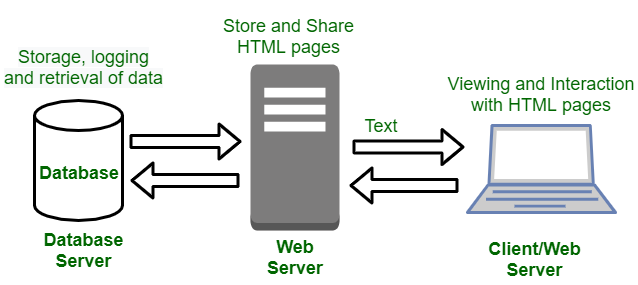
A dynamic website uses server-side scripting (like PHP, Python, or Node.js) and databases to generate content on the fly. These websites display different content based on user interactions, login sessions, or real-time data.
They are ideal for ecommerce platforms, blogs, social networks, and portals where content needs to change frequently.
Technologies Used in Dynamic Websites:
HTML, CSS, JavaScript (Frontend)
PHP, Python, JavaScript (Backend)
MySQL, PostgreSQL, or MongoDB (Database)
CMS like WordPress, Joomla, or custom frameworks (Laravel, React, etc.)
Advantages of Dynamic Websites
Easy Content Management
Use CMS like WordPress to update content without touching code.Personalization
Show different content to users based on behavior, time, or location.Interactive Features
Contact forms, search bars, login systems, booking systems, etc.Scalability
Easily scale from 10 to 10,000+ pages with dynamic templates.Database Integration
Fetch, display, and manage large volumes of content or user data efficiently.
Limitations of Dynamic Websites
Slower Load Time: More server-side processing can reduce speed.
Higher Cost: Development, hosting, and maintenance are more expensive.
Security Risks: More vulnerable to SQL injection or XSS if not properly secured.
Static vs Dynamic Websites: Key Differences at a Glance
| Feature | Static Website | Dynamic Website |
|---|---|---|
| Content | Fixed | Changes based on user/session/data |
| Ease of Updates | Manual HTML editing | Easy via CMS or admin panel |
| User Interaction | Limited | Fully interactive |
| Speed | Very fast | Slightly slower |
| Scalability | Difficult to scale | Highly scalable |
| Cost | Low | Medium to high |
| Maintenance | Low maintenance | Requires regular updates |
| Use Cases | Portfolios, brochures, landing pages | Ecommerce, blogs, portals, forums |
Which One Is Right for You?
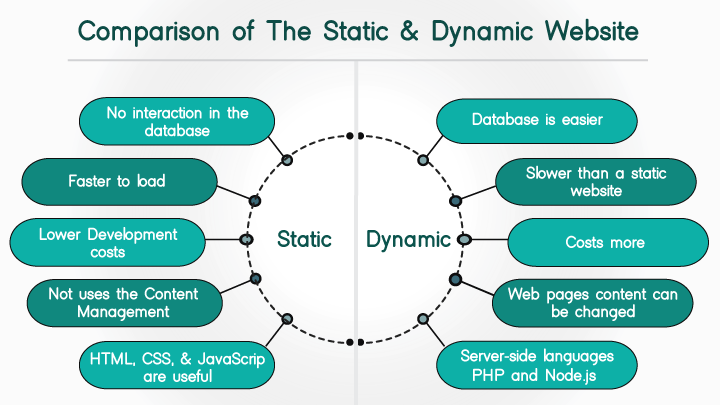
The decision between a static and dynamic website depends on:
1. Your Website Goals
Want to showcase your services with minimal updates? → Static Website
Need user login, shopping cart, blog, or real-time data? → Dynamic Website
2. Budget
Tight budget? → Start with a static website.
Planning for long-term growth and features? → Go with a dynamic solution.
3. Content Update Frequency
Rarely updating content? → Static
Updating content regularly or frequently? → Dynamic
4. User Engagement
No need for user forms or login? → Static
Need search, user login, or user-generated content? → Dynamic
Real-Life Examples
Static Website: A digital visiting card for a lawyer, or a photographer’s portfolio.
Dynamic Website: An ecommerce store like Flipkart or a blog like Medium.
What We Offer at Disha Technology
At Disha Technology, we specialize in both static and dynamic website development, tailored to your needs.
Our Services Include:
Custom HTML Website Design
WordPress Development
Laravel & PHP Web Apps
Ecommerce Website Development (Shopify, WooCommerce, Custom)
CMS Integration
Website Redesign & Speed Optimization
SEO & Mobile Optimization
Whether you are a startup, educational institute, hositals, NGOs, or a retail business, we can help you choose and develop the best type of website to meet your digital goals.
Final Thoughts
Static vs Dynamic Websites is not about which is better in general, but which is better for you. Think about your business size, your audience, how frequently you’ll need to update your content, and your technical capacity or team.
If you’re still confused, consult with an experienced website development company like Disha Technology | Web Services to guide your decision.
Need Help Choosing?
Let us help you find the best solution for your business.
👉 Request a Free Consultation Now or call us at +91-7007508268.

